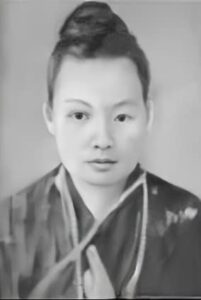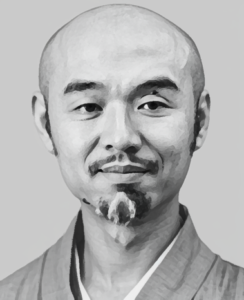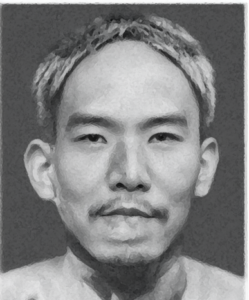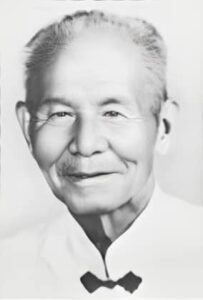Dishuquan (地术拳) is from the southern coastal province of Fujian, comes a unique style that specializes in the use of the lower extremities and ground methods in combat. Renowned in legends of the Bailian temples or the heroes of yesterday such as Fang Shiyu (Fong Saiyuk).
This powerful martial art style known as Dishuquan (Ground Boxing) prevails until today. Dishuquan is also known as Gouquan (Dog Boxing) or Dishu Quanfa (Ground Skills Canine Methods) or Dishang Feilong (Flying Dragon over ground).
The style was brought back from the secretive practice of only passing it to one’s family via the famous masters Chen Ayin and his disciple Chen Yijiu, who brought the art back from Singapore to Fuzhou, China. Dog Boxing is purpose built martial art that is unique in its fighting approach , so much so that often challengers would either run in despair or meet their fate.
Legends and Folklore
Dishuquan which is also known as Dishuquanfa or Gouquan is a martial synonymous with Fujian province yet unique amongst the other styles practiced in the province by incorporating many kicks and ground fighting methods. Dishuquan is said to have been created or practiced as early as the Ming Dynasty.
Another Legend suggests that the famous Fang Shiyu was a master of Dishuquan and had passed his skills to monks in the Zhuyuansi Temple (nowadays known as Guanyuan Temple), this was passed through various generations until a monk named Hui Kai taught the style to Zheng Yishan (from Nantai, Laoyaozhou Zhuang).
Fuzhou Dishuquan

Venerable Si Yue (四月大师, 1762-1850), a nun from the White Lotus Temple (白莲庙) the south of Fujian (Quanzhou area), near the Southern Dongchan Temple (said to have been related to the Shaolin Temple) there was a nunnery known as Bailian Temple. The nuns having often come from a non monastic life had the remnants of bound feet and as a result practised a martial art which required specialised leg sweeps and on the ground combat methods.
Due to involvement in anti Qing activities (likely White Lotus temple was associated with the White Lotus Society), she is said to have left Quanzhou injured and had later fallen ill whilst in the Yongchun county of Fujian, it was there that she was assisted by the Chen Family who took care of her until recovery. As she was indebted to the Chen Family she remained and taught their son, Chen Biao Dishuquan (Dog Boxing). The boxing remained within the Chen Family of Yongfu and was not taught to outsiders.

Chen Biao (陈彪, 1810-1902) was the son of the Chen Family merchant whose family originated in Fuzhou but moved south for business settling in the Yongchun county areas. Chen Biao had received tuition from local boxing masters (Huzun Quan, Tiger Boxing) since his youth. His father was regularl,y absent on trading business and from young and he was taken care of from his mother who had helped the Nun Si Yue. From such as basis, he studied Dishuquan for over 10 years with the nun Si Yue and later enhanced the techniques with his other boxing methods formulating a very thorough system of combat.Venerable Si Yue (四月大师, 1762-1850), a nun from the White Lotus Temple (白莲庙) the south of Fujian (Quanzhou area), near the Southern Dongchan Temple (said to have been related to the Shaolin Temple) there was a nunnery known as Bailian Temple.
The nuns having often come from a non monastic life had the remnants of bound feet and as a result practised a martial art which required specialised leg sweeps and on the ground combat methods. Due to involvement in anti Qing activities (likely White Lotus temple was associated with the White Lotus Society), she is said to have left Quanzhou injured and had later fallen ill whilst in the Yongchun county of Fujian, it was there that she was assisted by the Chen Family who took care of her until recovery. As she was indebted to the Chen Family she remained and taught their son, Chen Biao Dishuquan (Dog Boxing). The boxing remained within the Chen Family of Yongfu and was not taught to outsiders.

Chen Aiyin (陈阿银, 1858-1942), son of Chen Biao and one of the Chen family inheritors. It is said that after a dispute he had killed a bandit and therefore fled from authorities in Fuzhou to reside in Singapore where he lived in the chen families district. Chen Aiyin was an expert of both his family’s Huzunquan (Tiger boxing) and of Dishuquan (Dog Boxing).
In Singapore he was a private coach and ran a small business, teaching elementary Huzunquan to locals. Dishuquan was taught to only a select few in Singapore he taught few students including Chen Zhenzai, Chen Yijiu and Chen Yuanhu. The most famous of which became Chen Yijiu.
Chen Yijiu (陈依久,1902-1997) an exponent of various martial arts (Houfa – Monkey Method, Longzhuang – Dragon, TaiQuan (Thai Boxing) which he had studied in his youth. As a result of this basis he learnt the Dishuquan style from Chen Aiyin quickly and unlike other students he did not have to study tiger style. He was originally from Fuzhou and moved to Singapore in 1921. The story was that one day when he was passing outside Chen Ayin’s store there was some brawls and disputes, suddenly, Chen Ayin appeared in the seen and in a matter of seconds defeated all the gangsters. Chen Yijiu being extremely impressed then sort out the great master Chen Ayin, so as to learn the Dishuquan.

In 1929, a Russian fighter came to Singapore and challenged the local masters after having defeated experts from over 11 countries. Master Chen Yijiu watched as many fellow martial artists were defeated by the big Russian. As he could no longer stand it, he challenged the Russian and as the duel commenced large powerful blows aimed at Chen Yijiu’s upper body met without target and suddenly, Chen Yijiu fell to the ground and applied some shin kicks and a series of lower body attacks. A large ‘crack’ was heard followed by a scream as the Russian champion fell broken legged to the ground. Since then Chen Yijiu became famous and was nicknamed ‘Iron Leg Chen’ throughout South East Asia. In 1932, Chen Yijiu returned to his hometown in Fuzhou (Xi Yuan Village), he developed the single methods into a structured system, where he taught many disciples (over 5,000 students) throughout his long life and passed on the skills of Dishuquan. His son, Chen Zhenglu (陈政禄 1930-2016) was until his passing, the keeper senior of Dishuquan.
Another line of DIshuquan from Fuzhou is that of Master Yixiang (义香) who had studied at the Guangyan Temple in Yongtai. This school’s manual passed from Yixiang was called Dishu Quan Fa Tupu (Ground Art Canine methods Manual). Yixiang passed his skills to disciples Chen Fuluan (陈福銮) and Chen Jiangyun (陈将云).
Chen Jinlong (陈金龙) is a another disciple of Yixiang (Yixiang Dog Boxing) who also studied with Chen Yijiu (Chen Style Dog Boxing) and Wu Fuguan (Minghe, Calling Crane). Zheng Zhenguan (郑振官, 1933-). studied with the two masters in 1945-1951 and acquired knowledge of Dog boxing. After years of arduous practice and experiences he mastered the style.
Yixiang Quan Fa has come into prominence after the establishment of the Yixiang society in 1989 by M. Chen Jinlong. The style is represented by the foundation 36 techniques and their combinations and then thee routines Seven stars fall to ground, three lions rolling and 18 rolls altogether completing the 108 principles of the system.
Quanzhou Ditang Quan Fa
Another monk known as Hui Kai and a fellow of Si Yue was also an exponent of Dishuquan (the manual of this style is called – Ditang Quan Fa (Ground sequences Canine methods) and passed this skill onto Zheng Yishan who was originally from NanTai in Fuzhou. Master Zheng taught very few students and the key proponent of this style was the medicine trader Zhuang Zishen.
He had many students in his lifetime, some of various specialities including Dishuquan (Dog Boxing). In 1988, he commenced the Jianying martial arts Institute which is now led by his son Zhuang Xicong (庄昔聪).Zhuang Zishen (庄子深, 1913-1988) was an esteemed practitioner of Traditional Chinese Medicine and Martial arts. He was fortunate to receive tuition from many masters in a variety of styles and became an important figure in Fujian martial arts holding posts such as President of the Quanzhou martial arts research society and the Fujian provincial martial arts bureau.
From early on Dishuquan emphasises dual practice of techniques from the entry methods from a distanced to counters and angular displacing movements into binds, locks and releases. Further to the practical methods the basic set is one of sanzhan. Sanzhan in Dishuquan is for energy development (tun,tu, fou, chen – as other Fujian styles) but also introduces some key Dishuquan methods which include Butterfly Ground Kicks, Incense stick to heaven kick and some fundamental rolling kicks such as Dog passing the mountain. The practice of the various stepping and body methods assist development of transitionary appraches between the three planes. Many body conditioning of the hands and the limbs are also trained, coupled with some multiple opponent drills.
The use of apparatus including sandbags, trees, rolling poles as examples are also practiced with the aim of achieving the infamous iron legs of Dishu Quan. In terms of sets practice, often the forms are classified in accordance with the combat planes that they develop. For example Sanzhan, Sanshiliushou and Qixing are considered as emphasizing the upper plane, whilst Lianzhu and Bianfu are more towards the middle plane and the advanced methods as Meihuaxiu are more towards developing the lower plane. Therefore, Dishuquan progressively develops the mastery of hand to combat from standing to the ground. In any case, the individual techniques are mastered, drilled and applied in combat practice prior to/during the learning of the complete set.
Contents and key principles
There are kicking methods such as Yuanyang Lianhuan Tui, Nian Xin Tui, Gou Gua Tui, Hui Wei Tui. Additionally there is a heavy emphasis in using the hands to fan the opening but the legs to close the door (ie to finish of the attack).
The lower plane methods include Deng(Press), Ti (Lift), Jian(Scissor), Gou (Hook), Sao (Sweep), Tan (Spring), Chan (Wrap) etc. The body Methods whilst have the shape of a canine that include Tun (Swallow), Tu(Spit), Fou (Float), Chen (sink), Ji (Press), Kao(Close In), Chong (Bump).
When practicing the lower plane methods, there are 10 key points of consideration:
- Zheng tou Qing jin – Straight Head, Relaxed neck
- Han Xiong Ba Bei – Sink the chest in and protrude the back.
- Chen Jian Luo Zhou – Sink Shoulders and drop the elbows
- Jian Tun Wan Yao – When falling to the ground the hip must be contained and the torso waist should be bent slightly.
- Qu Xi Gou Jiao – Bent knees and the feet are hooked in
- Shen Suo Jiao Ti – Contraction and Expansion must work in harmony when practicing the ground methods
- Fan Gun Yuan Hua – When rolling the actions must be smooth just like outer surface of pearls.
- Chuan Zhuan Shu Qiao – The Thrusts and turns are seamless . In Dishuquan falling is as natural as walking there shouldn’t be any hinderance of transition or movement.
- Zhu Dong Dao Di – Aggressively and directly moving to the ground. The actions are clear and defined.
- Bei Dong Dao Di – Passively, discretely and indirectly moving to the ground then attack aggressively.
Boxing Routines/Forms of Dishuquan
Dog Boxing is a specialized martial art and as a result relies on few forms but a significant amount of drills and combat practice. However the forms are used as a method to maintain and introduce new techniques to develop strength, stamina and continuity. Each of the sets have there own key techniques/methods and are progressive to each. According to the Nanyang foundation in Dishuquan the emphasis was on technique practice (108 unique methods), arranged in only 3-4 sets, but these have been expanded by the time the style was taught in Fuzhou and until today and most schools have adopted these.
Empty Hand*
- Sanzhan (三战, Three Battles)
- Qixing (七星拳, Seven Stars)
- Shuang Bianfu (双迟蝙蝠, Double Bats)
- Sanshiliu (三十六手, 36 Hands)
- Lianbuquan (连步拳, Continuous Step Fists)
- Simenjian (四门箭, 4 Gates arrows)
- Shiba Lianzhu (十八联珠, 18 Linked Beads)
- Meihuaxiu (梅花秀, Elegant Plum Blossom)
Combat (2 man) Sets
- San Bu Jia (三步甲, 3 Steps Frame)
- Liu Bu Gou (六步钩, 6 Step Hooks),
- Shen Quan (神犬, Spiritual Canine)
Weapons Practice
There are only 2 weapons methods (no forms) that are taught as part of the Dishuquan curriculum:
- Gun Fa (棍法, Stick Methods)
- Dao Fa (刀法, Broadsword Methods)
*Note: There are additional sets that are practiced by different schools such as Qxing Zhuidi (七星坠地), Zuiquan Shiba Gou (醉犬十八勾), Qishier Lianquan (七十二连拳), as well as xia pan variations of the primary sets. Further the Quanzhou line of Dishuquan has sets such as Bamen Ba (八门把), Sipai (四排), Feihu (飞虎), Zhuiyun (追云), Lianshou (连手), and some broadsword sets. Our journeys and exchanges have let us study and appreciate these materials/sets but we did not feel necessary to expand curriculum beyond the core.
